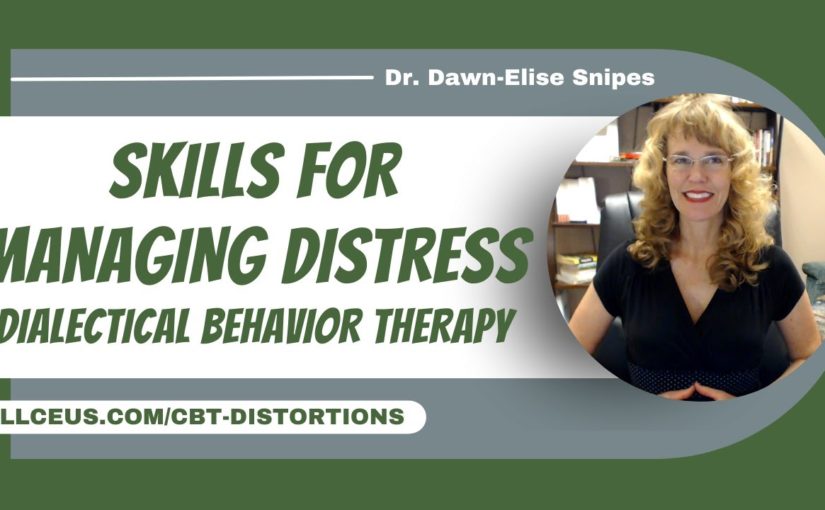Hey there, everybody, and welcome to this presentation on diagnosing anxiety and panic in the DSM 5tr. I’m your host Dr. Donnelly Snipes in this presentation.Very briefly, we’re going to review the diagnostic criteria for anxiety disorders or at least most of them in the DSM 5 tr.So let’s talk a little bit about anxiety disorders in general, when we’re talking about anxiety disorders, we need to remember that fear and anxiety may be expressed as fighting agitation, tantrums fleeing freezing fawning clinging, or withdrawal, or what I call the final f, Which is um politely forget about it, because people, just don’t have any more energy left, so they kind of withdraw anxiety.Disorders differ from each other regarding the types of objects or situations that cause fear, anxiety, or avoidance behaviors and the associated beliefs.Anxiety disorders represent a response that is not developmentally culturally or, I also add, contextually normative in terms of intensity or duration.So when we’re looking at what somebody is anxious about, we want to examine, obviously culture and development, something that a five-year-old is afraid of is not necessarily going to be the same thing that a 25-year-old is afraid of.We also want to look at context, though, something that uh, you’re, afraid of in one context, you may not be afraid of in another like for children being around strangers may not be stressful for them when they are at home or when they’re.At school, somebody comes in to do a presentation versus when they are alone and they don’t have a caregiver around.Interestingly, from August 2020, through December 2020, the percentage of adults reporting symptoms of an anxiety disorder rose from 31 4 to 36 9.Now, when you go through the DSM and you start adding up the prevalence of these anxiety disorders, it is really hard to get to a number anywhere close to 36 9. So the numbers in the DSM and the numbers in the uh national health survey, don’t seem to jive very well.We also have to remember that during 2020 we were at the beginning of the pandemic, so there was more anxiety.You would expect that, but even the 31 percent that it was before 2020 seems to be higher than what is identified in the DSM.So I think that’s interesting the anxiety chapter in the DSM 5tr, just like in the DSM 5, is arranged in order of diagnosis which appears in children first, so separation, anxiety, and disorder appear first, and generalized anxiety.The disorder is down a little way, whereas you might expect some of the quote more common disorders to be first, but that’s not how the DSM is arranged.However, in this presentation, I did put generalized anxiety first, when we talk about generalized anxiety, we’re talking about excessive anxiety most days for six or more months, and the anxiety is about a variety of things.It’s not just about one particular thing like health or an individual or a phobia.It is about a variety of things.The worry, in addition to being excessive for the person’s developmental age, culture, and context.The worry is difficult to control the anxiety or the feeling of anxiety is associated with three or more symptoms in adults or one or more symptoms in children, feeling restless or feeling keyed up or on edge, easily fatigued difficulty concentrating, or mind going blank, irritability muscle, tension Or sleep disturbance, I want you to think about it. Anxiety is part of the fight or flight response, so we would expect somebody to experience anxiety.Would it be experiencing symptoms of hpa, axis activation, or activation of the threat, threat, response, or stress response? Whatever you want to call it, so we would expect all of these symptoms or any of these symptoms. When the fight or flight system is engaged, the body is not focused on higher order, processing, memory, or concentration it’s focused on self-preservation protection the person becomes more vigilant because they are trying to protect themselves from threats.They’re not able to relax enough to get good quality sleep because guess what they are keyed up.They’re scanning for those threats, muscle tension and I’ve mentioned in other videos.When I used to play tennis, my coach always used to say don’t stand flat-footed on the baseline, because it takes more time and it’s harder for you to run and spring into action to where that ball is going to be.Now.That is not a threat per se, but the same thing is true for people with anxiety disorders, when you are when you’ve got that muscle tension, it’s kind of like standing on your toes on the baseline.In tennis, you are primed and ready to go and it makes it easier to theoretically fight or flee.These symptoms have to cause clinically significant distress.People can have subclinical anxiety disorder where they have a lot of worry about a variety of things, but it is either not excessive for what they’re worried about, or it doesn’t cause them clinically significant distress. Overall, they report a decent quality of life.It doesn’t interfere with functioning in major areas of their life and generalized anxiety disorder, as well as all of the disorders, are not better explained by a medical, mental, or substance use disorder, and we’re going to talk in the end about differential diagnosis Of the anxiety disorders in general because there’s a lot of overlap between the symptoms, as well as the differential, diagnosis, and comorbidities for anxiety disorders.Remember the difference is often what the person experiences anxiety about and the cognitions associated with the diagnostic features of generalized anxiety disorder.Well, this section, as with most of the sections in the anxiety chapter, pretty much just recapitulated the diagnostic criteria and it elaborated a little bit.One interesting feature is that for generalized anxiety disorder, they noted that adults tend to worry about general life, things like paying bills and getting a promotion, or what’s going to happen with this or that or what’s going on in the world. Kids tend to worry about their competence like performing at school or their ability to be competent in relationships.Sometimes they worry about disaster now, with the coming of the pandemic.We can probably add that too, but other disasters like hurricanes and fires and floods and those sorts of things can prompt a lot of worry in children and punctuality.Interestingly enough, some children become very concerned about being punctual, and so it’s interesting to note that there is a difference in what they worry about, which makes sense, because adults have different responsibilities than kids do, and you notice that, except for disaster, a lot of these worries revolve around the primary life areas or functions of the person.You know: kids, are, n’t worried about paying bills or or maintaining or parenting, or some of the things that that adults worry about associated symptoms.Well, let me talk about disaster. Quick, I’m trying not to go too far off the rails today, because we’ve got a lot to cover, but it’s important to recognize that children have a difficult time, understanding, the prevalence and likelihood of things.So when there is a disaster such as you know, we’ve had several in middle Tennessee over the past two years and a child watching the news or hearing about the news may not understand how close or far away that disaster was or the likelihood of It recurring adults are better able to understand.You know it’s a 100-year flood or there’s the chance of it happening again.Do you know whatever? The probability is depending on what you’re talking about children don’t understand that they see it on the news it feels like, since it’s on the news, it’s kind of in their house.So it feels like it’s right in their space and it’s hard to know when it’s going to end or when it’s going to happen again, which can prompt them to have a lot more worries about disasters.Parents can help by explaining some of the things to them and explaining to children the probability of another disaster occurring, and you know how they’re safe right now and the steps that they can take.It won’t do everything, but it is important again to recognize children’s different cognitive abilities compared to adults, associated symptoms with generalized anxiety, disorder, and other somatic symptoms that are not as intense as those seen in panic disorder.So we will also see potentially heart racing clammy, skin, rapid breathing other things, and an upset stomach that isn’t specifically indicated in diagnostic criteria, but we know it happens when that fight or flight response is kicked off the prevalence.Remember I said if you start adding up the prevalence of all these anxiety disorders.You’re going to be hard-pressed to get anywhere close to 31 percent and according to the DSM 5 tr between one percent of adolescents and three percent of adults in the? U s experience generalized anxiety disorder according to the National Center on Health Statistics in 2019. Now that was before the pandemic.15 6 of adults experienced symptoms of generalized anxiety disorder in the prior two weeks.The development, and course the mean onset, is rarely before adolescence, and is I’m? Sorry, the mean onset is 35 and rarely before adolescence.So this is one of the disorders that has a much later onset than other disorders, which I did find to be somewhat interesting.Now we’ll move on to separation.Anxiety, separation.Anxiety is the first disorder in the chapter because it tends to be the one that presents earliest and it can be diagnosed as early as preschool separation.Anxiety is characterized by developmentally inappropriate, excessive, recurrent anxiety about separation from major attachment figures.To be diagnosed, the person has to have three or more symptoms.It can be diagnosed in childhood. It can be diagnosed in adulthood if it’s diagnosed in adulthood.You do not have to have a childhood onset of separation anxiety.It actually can have an adult onset, so that is something to remember: symptoms, three or more distress due to or in anticipation of separation from home or from major attachment figures, anxiety about losing a major attachment figure, or possible harm to them.Anxiety about something bad happening to the person, the patient, which would cause them to be separated from an anxiety from an attachment figure.So they have fears about something happening to the attachment figure, causing separation, and fears about them, something bad happening to themselves, causing separation, a reluctance, a refusal to go out or away from home because of fear of separation.Now, generally, this is leaving home and separating from that attachment figure, but in some cases, it can include even being reluctant to leave the house to be cut with the attachment figure because they’re afraid that when they’re out there, they may get separated.Now think how this might occur if there was a child who happened to be at a carnival and got separated from their caregiver that might prompt future fears of separation when in public places, fear of or reluctance to be alone, or without major attachment figures.Refusal to go to sleep without being near a major attachment figure, nightmares about separation, or physical complaints in reaction to or in anticipation of separation.So they have those physiological symptoms of anxiety now note here they keep talking about major attachment figures because remember this can be diagnosed in adulthood.We’re not talking about the primary attachment from infancy. We’re talking about the person’s current major attachment figure, whether that be their significant other, their parent, or whomever that happens to be the fear, anxiety, or avoidance, is persistent, lasting at least four weeks in children and adolescents, and typically six months or more In adults – and you’ll find that’s a common theme where a lot of these situations or conditions have to last six months or more and be causing clinically significant distress for six months or more to rank a diagnosis.Although the symptoms often develop in childhood, they can be expressed throughout adulthood.It can be diagnosed in adults in the absence of a history of childhood separation, anxiety, or disorder, and, as I said, it causes clinically significant distress or impairment in one or more areas of functioning.The diagnostic features section repeats the diagnostic criteria with some elaboration and examples.It’s a pretty straightforward diagnosis in terms of development and, and course the onset of separation.Anxiety can be any time from preschool through adulthood, but generally before the age of 30.So you can have diagnoses of separation anxiety up through the 20s, there may be periods of exacerbation and remission, although most child onset cases do not experience ongoing, clinically significant impairment.I thought that was kind of an interesting associated feature.Now these are not diagnostic criteria.These are features that are associated with separation anxiety but didn’t rank in the diagnostic criteria, sadness or apathy. Well, if somebody is perpetually anxious that hpa axis is going to down-regulate some which may contribute to apathy, if they are perpetually anxious, they may also start feeling hopeless and hopeless, which is associated with feelings of sadness and depression.They may have difficulty concentrating well.The mind is not focused on concentration.If it’s in a perpetual state of fight or flee, there may be social withdrawal just stepping away from everything, because they don’t have the energy to engage with others.Because the anxiety is so pervasive in older children you may see homesickness or pining when they are away at camp or or something like that.Now.A lot of children who don’t have separation, anxiety, or disorder, experience homesickness when they’re away at camp.For the first time, however, this is also associated with separation, anxiety, the child migs or the person may exhibit anger or aggression towards separators.So anybody who’s causing a separation between the patient and their major attachment figures may provoke anxiety, anger, and perceptual disturbances.Now these are not hallucinations. These are when a person is alone, for example at night, and they feel like somebody’s watching them, or they think they see something moving in the shadows.It’s not there and by turning on the light.So there are no more shadows.You know that goes away.It’s, not a persistent uh hallucination that the person is experiencing, but perceptual disturbances are more common in children than they are in adults, and we want to make sure we don’t mislabel that as something related to a psychotic disorder, children with separation, Anxiety tends to be described as demanding intrusive and in need of constant attention.According to the DSM now, I would argue when we get down a little further that this may be true of all people with separation, and anxiety, adults may appear dependent and are likely to contact their major attachment figures throughout the day and track their whereabouts.They are also often overprotective as parents and pet owners.Interestingly enough, the DSM did mention pets where the person with separation anxiety may be excessively concerned about knowing where their pet is at all times.The prevalence of separation.Anxiety in children is approximately four percent, and in adolescents and adults, it ranges from one to two percent. In the culture section, the DSM talked about the importance of differentiating separation, and anxiety disorder from the high value, some cultural communities place on strong interdependence among family members.Specific phobias is the next in the line of disorders we’re going to talk about and a specific phobia is pretty straightforward.There’s a marked, fear or anxiety about an object or a situation about 75 percent of people that have one phobia have more than one phobia, and I think, if you think about it, even if it doesn’t rise to the level of being a Diagnosable phobia you can think about.If you have one what we’ll call irrational fear, you probably have a couple of others when I started to think about it.I’m, like yeah, i have i have a couple in there.The stimulus almost always produces an immediate fear response and is actively avoided.The fear is disproportionate to the threat that persists for guess what six months or more and causes clinically significant distress – and I have this bold and italicized because it’s important to remember that.Having a fear – and I’ve talked in other videos about my fear of bridges, I also have a fear of enclosed spaces.I hate you know those little water, tubes and tunnels and things that make me feel closed in.Does it cause me clinically significant distress or cause me to have to alter my life to get around it? No, so it doesn’t rise to the level of a specific phobia. A lot of people have fears that may not have a um basis or the fear may be disproportionate to the threat.In reality, we recognize it, but it doesn’t cause us clinically significant distress, so it would not be diagnosable as a specific phobia and the specific phobia is not better explained by another mental disorder and I’m thinking here more obsessive, compulsive disorder.But in the differential diagnosis list on the anxiety disorders, there were a lot, so we’re just going to go through all of those.In the end, the diagnostic features again for specific phobias were pretty much a restatement of the diagnostic criteria-associated features.Interestingly enough, some people are arousal.Well, that makes sense when the HPA axis kicks off.A lot of people have a um increased heart rate, sort of a panic sort of feeling about them, not to the level of a panic attack necessarily, but they have that aroused state in preparation for fight or flee.Other people may have what they call a vasovagal response in which their heart rate decelerates their blood pressure drops, and they may faint my grandmother used to do this.Oh my gosh, and it wasn’t necessarily hers.Wasn’t phobia-related, but when she would get startled she would fall out and for the longest time the doctors, couldn’t figure out exactly what was going on. But ultimately my guess would be.It re had something to do with with anxiety or generalized anxiety.The prevalence of phobias is between eight and twelve percent, it peaks in adolescence at sixteen percent.So sixty percent of adolescents have specific phobias.The development, in course usually develops before age, 10 or after a trauma, and the presence of phobias is a risk factor for neurocognitive disorders in older adults.Why is this? We’ve again, we’ve talked in other videos about how hyperactivation of that stress response system keeps levels of glutamate and norepinephrine and stuff high in the brain which causes neurodegeneration, which can lead to neurocognitive disorders additionally, because of social withdrawal and avoidance and restructuring Of their daily lives, to avoid the phobic stimulus, there tends to be less stimulation for the person with specific phobias, which may also lead to a decline in what they call cognitive reserve and social anxiety disorder in social anxiety disorder.There’s a marked fear of social situations when in which one might be judged.So you’ve got generalized anxiety, which is anxiety about a lot of things over at least six months.We have a specific phobia, which is something specific.Like enclosed spaces or spiders, or snakes, um separation, anxiety, which is anxiety or fear of being separated from an attachment figure, and then social anxiety, which is fear from being in situations in which one might be judged by children. The symptoms have to be present not only in relationships with adults but in relationships with their peers.It’s natural for children to be somewhat anxious if they’re interacting with adults if they’re having the same anxiety when they’re interacting with their peers, then that’s really what we’re going to look for for a trigger The person has an excessive fear of being embarrassed, rejected or offensive, and the offensive seems to be increasing in popularity or not popularity in commonality, um very quickly, with Twitter and Facebook and tick tock, and all these other things and trying to be politically correct.A lot of people have developed a level of social anxiety, maybe not to the level of being a disorder, but, a level of social anxiety, because they fear not saying the right thing because they fear being canceled.Social situations almost always trigger anxiety and social anxiety disorder.Social situations are actively avoided or endured with intense fear, and the level of fear is disproportionate to the potential consequences.People may have a high level of fear and anxiety uh before going out and giving a performance in front of 10,000 people the level of anxiety for that would probably be different than giving a speech in front of six classmates.You know you see the difference here, but a person with social anxiety disorder.They would have that same level of fear in front of six people.They knew as opposed to ten thousand, that they didn’t persist again for six months or more causing clinically significant distress and is not due to another medical, mental, health, or substance-related condition.There is a note that social anxiety disorder can be performance only and you do want to specify that if it only has to do with giving speeches performing sports music, or anything like that, the diagnostic criteria features section, gave further examples of the symptoms that were identified in The diagnostic criteria associated features with social anxiety. The person may be passive or shy.They may want to kind of blend into the wall.They may be somewhat withdrawn because they don’t want to be out there in the limelight.They don’t want to be in this position where they fear being judged.On the other end of the spectrum, though, there’s a proportion of people with a social anxiety disorder who are highly controlling of situations, and they may try to control the conversation and control other people in the situation to avoid feeling out of control.Use of substances, substance, use, misuse or abuse is often associated with people with social anxiety disorder, and I have parenthetically heard liquid courage is what we used to call it back in the day I don’t know if it’s what they still call it but using substances to help temporarily allay anxiety.Interestingly, as alcohol leaves, the body people tend to have an enhanced anxiety response.So using alcohol before a social situation may end up causing more problems for some people, but that’s that’s up to them.Additionally, you may see a worsening of physical illness symptoms such as tachycardia or increased tremor in people with social anxiety disorder, so if they already have something that causes a tremor or a tick that may get worse, if they already have something that causes tachycardia, that may Get worse in situations in which they fear being judged.Now I have here increased pain, a question mark that’s not identified in the DSM 5t. However, we know that hyperactivation of the hpa axis contributes to ultimately development of systemic inflammation and the worsening of autoimmune disorders.So I would be interested to see what the actual numbers are for that and no, I could not find any research that compared the rates of increased pain with social anxiety, specifically prevalence.Seven percent of people in the United States experience social anxiety, disorder now brace yourself.This is not a typo.2 3 percent of people in Europe can be diagnosed with social anxiety disorder.So what is that? A third? What’s different in the United States? That is contributing to significantly higher rates of social anxiety fear of being judged and fear of offending people.Just saying additionally, social anxiety disorder does tend to be highest in non-Hispanic whites.So what is unique about nonhispanic? Whites in us I’ll leave you to talk about that and panic disorder, people with panic, disorder, experience, recurrent unexpected surges of intense fear or discomfort that peak within minutes and has a and accompanying four-plus symptoms.Now I have bolded and italicized unexpected here there are expected panic attacks when you’re in a situation in which you’ve had a panic attack before when there is a known trigger for the panic attack that’s an expected panic attack that doesn’t count towards our diagnosis here, which I don’t know seems a little strange, but okay, the panic attacks have to be unexpected.That is, they come from out of the clear blue and the panic attacks need to be characterized by four or more of the following symptoms palpitations, which is when it feels like your heart, is like fluttering, pounding, heart or tachycardia, which is racing heart, sweating, trembling or Shaking a feeling of shortness of breath or smothering you just can’t don’t feel like you can breathe, feeling like you’re, choking chest pain or discomfort, nausea or abdominal distress, feeling dizzy, unsteady lightheaded or faint chills or heat, sensations, numbness or tingling. Derealization, in which things just don’t feel real.You feel like you’re kind of a dream or depersonalization.You don’t feel, like you, ‘re part of your own body, anymore, with fear of losing control or going crazy and fear of dying.Now I’ll mention it, even though it’s pretty obvious.Many of these symptoms are also symptoms of a heart attack.It is important if you are a clinician not to assume that somebody who is experiencing a panic attack it’s, it’s, just a panic attack and to dismiss it.It’s important to take every panic attack seriously when somebody’s experiencing it and work with their medical provider to help them differentiate between what’s a panic attack.How do I know when I’m having another panic attack versus how do I know when I need to go to the ER and their doctor will work with them on that culture? Specific symptoms of panic may include tinnitus or ringing in the ear and neck.Soreness headache, uncontrollable, screaming, or crying.Interestingly, even though these are culture-specific symptoms, the DSM said those don’t count toward the required four plus symptoms. Additionally, at least one of the attacks – unexpected attacks has been followed by one month or more of both of the following persistent concern or worry about additional panic attacks or their consequences and a significant maladaptive change in behavior related to the attack avoidance of situations where You think they might happen again or ritualized, or superstitious behavior or extreme behavior, like changing your diet completely or doing something extreme to try to prevent the attack, so the unexpected attack happens and then for the next month or more.Both of those persistent concerns about it happening again and significant maladaptive changes in behavior are occurring, it has to cause clinically significant distress and it’s not due to another mental medical or substance use disorder.Interestingly, for panic attacks, there were no specifiers, but in the diagnostic features, it did note that panic attacks can be full meaning four or more symptoms or limited symptoms, so it doesn’t meet all of them.Doesn’t meet four symptoms or more, but the person’s having a panic response.If the person has never had a full-blown panic attack, uh, four or more symptoms, then you would not diagnose panic.Disorder frequency can be relatively regular like one per week or it can come in bursts where they, where they have multiple, really close together, then they go weeks months, or even years without having them, and then they have another burst of panic attacks, and there could also Be instances where they just have a panic attack, and then they may go for a couple of years or more before they have another one.It still qualifies as panic disorder.There is no code for remission of panic disorder and the expectation is unfortunately that if somebody has had a panic disorder at some point, they probably will have another panic attack at another point.Remember that expected panic attacks occur with known triggers, and there are many culture-related diagnostic issues due to expected triggers.So if you read through the culture-related diagnostic issues, a section of the DSM 5tr, you will find they talk about a lot of culture-bound triggers that can cause a panic attack in people’s associated features. People who have panic attacks.Panic disorder may also cause intermittent anxiety about health or mental health.They tend to be more somatically sensitive.That means they’re more aware of what’s going on in their body.Well, that makes sense if you’ve already had your body kind of go haywire on you once makes sense that you would be a little bit more hypersensitive to it happening again.They may have increased anxiety about their ability to tolerate daily stress there.A lot of times this may stem from the fear that if they experience too much stress it, ‘ll trigger another panic attack and they may have more extreme behaviors to control panic.The prevalence of panic disorder is about the same two and two percent to three percent in both the: u s in europe and Europe, the only disorder that had a marked difference between the; u s and other countries.Interestingly enough was social anxiety, disorder.The development of panic disorder, the median age – is 20 to 24 in us and 32 worldwide. So that is a little bit divergent.You know the prevalence, and the number of people that experience it worldwide are pretty comparable, but the median age for panic disorder is much younger in us than in other countries.Additionally, they speculate that older adults may attribute symptoms to medical conditions, so they may be underrepresented in the prevalence rates because when they’re having these panic symptoms, they’re, attributing them to medication, side effects, or other health conditions that they already have.So let’s talk about some of the risk and prognostic factors for anxiety disorders in general.Anxiety disorders often develop afterlife stress.This could be a death, a severe illness, a disaster, a big move becoming a parent adverse childhood experiences, or aces that’s just to name a few that those aren’t all of the causes, but I think it’s interesting that becoming A parent was in there as a life stress that often triggers the development of anxiety disorders.I mean I’m a parent myself.I can see how that could happen, but it’s not something that I had considered in the past as a risk factor for the development of anxiety disorders.People who’ve been bullied have an increased risk of developing anxiety disorders.The heritability of anxiety disorders ranges between 30 and 75 percent. I found that interesting, but they didn’t explain in any of the diagnoses whether they were looking at twins that were raised in the same household or twins that were raised in different households.If they’re raised in different households, it gives more credence to a genetic component.If they’re raised in the same household, then they experience the same psychosocial, and environmental stressors.Both of them are so.I don’t know what the actual data is on that person with negative affectivity.They tend to be more brooding, more depressed, more irritable people who are more self-conscious.People who ruminate more also all of these kinds are combined often referred to as neuroticism.They are at higher risk for the development of anxiety disorders.Attentional bias to threat was noted in generalized anxiety disorder as being an associated feature, but research shows that people with any anxiety disorder tend to have a stronger attentional bias to threat, which means they tend to be more hyper-vigilant.They tend to be more aware when there are, threats in the environment, and anxiety disorders by and large – tend to be much more frequent in women than in men. Interesting, not sure.Why again, my assumption is this is people who are biologically female and it seems to be consistent across cultures.Therefore, I am wondering what the genetic predisposition might be that may cause this.It seems like it’s, less about environment and shaping and behavioral training and more about a physiological response.But additionally – and these last two were not in the DSM.However, I did a PubMed search for risk factors for anxiety disorders and those who have a more external locus of control.That means they believe that things happen in the world by fate.By chance, there’s not a they.Don’t have a whole lot of control or ability to change what’s going on destiny is preordained, etc.People with that outlook who have a more external locus of control, tend to have much higher rates of anxiety and depressive disorders, and again not in the DSM, but in the PubMed. In the literature.People who have a lack of emotional support also tend to be at greater risk for developing anxiety disorders seems pretty self-explanatory in terms of suicidal thoughts.Anxiety itself increases the risk of suicidal thoughts.All of your anxiety disorders carry with them an increased risk of suicidal thoughts.People with separation anxiety have that generalized anxiety, related to increased risk, but people with specific phobias, interestingly enough, have an increased transition from ideation to attempt in a study that was cited in the DS well mentioned in the DSM, but they didn’t say what the study Was they looked at adults and they found that up to 30 percent of people who had their first suicide attempt? It was related.They also had a specific phobia or it was related to that specific phobia so that’s 30 percent is a big number uh.When we’re, especially when we’re talking about suicide attempts and suicidal ideation, if you have somebody with a specific phobia, we often downplay that because we think it’s just a fear of this or a fear of that.But that fear can feel very, limiting and oppressive to a lot of people, and again 30 percent of them.Uh, 30 percent of people who have attempted suicide also had specific phobia functional consequences.Now I could go on a diatribe about the functional consequences of anxiety disorders. The DSM didn’t have much to say about it, so let’s talk about some of these limited independent activities.This is especially true in agoraphobia and separation, anxiety, people who are afraid of leaving the house for fear of being separated from their significant other or for fear of being separated from their safe place, and people who have social anxiety, who fear being in social situations, may Have a lot of restrictions on their life activities and limited activities that they feel safe or comfortable doing by themselves, not in the DSM 5 tr, but in the literature, also the functional consequences of impaired relationships.People with anxiety disorders may be because of their restrictions on life activities and their um potential need to know where people are and their separation, anxiety, etc.A lot of times, people with anxiety disorders struggle in their relationships, because it can feel overwhelming to the partners.As I mentioned earlier, people with anger, and anxiety disorders, have higher rates of autoimmune issues.Continuous or excessive levels of stress hormones contribute to systemic inflammation, which will trigger depression or is associated with triggering depression and associated with worsening of autoimmune conditions and obesity.I thought this one was interesting, but it makes sense when you look at it.People with anxiety disorders, who often are restricted in their life activities, may feel worn down and exhausted.From being stressed out, all the time may not have a lot of energy to do.Other stuff tends to be more prone to develop obesity so that’s an interesting functional consequence now differential diagnosis, I told you there was a laundry list of them. Generalized anxiety, a disorder in gad.Excessive anxiety is about a variety of things for at least six months.Separation, anxiety, the worry or the anxiety is about separation from the attachment figure.Okay, that’s pretty clear, agoraphobia.The fear is about being trapped or helpless in situations in which escape is difficult.The fear surrounds being away from their safe place, not being away from a person they want to be in a place where they feel safe, and it needs to be not specific to one setting so being trapped or helpless in a situation.I give the example of an MRI that closed MRIs.Oh my gosh, I can’t stand them.I’m terrified of them, but that is specific to one setting and I’m not afraid to leave the house for fear of being trapped or helpless in a situation, social anxiety, anxiety is about being judged negatively, and illness anxiety and this illness anxiety.Falls under somatic disorders but illness anxiety. The worry is about the illness, not separation, judgment, or being away from your safe place, so that’s a differential diagnosis of your basic anxiety disorders in terms of other disorders because there’s that criteria not better explained by another mental health or medical disorder.In psychotic disorders, people who have hallucinations and delusions may also have anxiety, but their worry or fear surrounds hallucinations or delusions and is not reversed by context or the presence of an attachment figure.So a person with psychotic disorders, if their major attachment figure shows up does. n’t help them feel more comfortable if they turn on the light to eliminate the shadows that don’t make them feel more comfortable, and the hallucinations are not due to psychotic disorders.The hallucinations are not due to something present in eating disorders avoidance behavior is only related to food and food-related cues.According to the DSM, however, one of the main criteria for your eating disorders is an excessive fear about weight, shape, and size, and it’s important to recognize that, because people with eating disorders may avoid mirrors and scales and food, obviously certain foods, and that could All be related to their eating disorder, body, dysmorphic disorder.The fears are only related to people being offended by a particular perceived flaw in obsessive-compulsive disorder.The fear is an object or situation as a result of obsessions.So if they start thinking about germs on their hands – and they keep thinking about it, then they start developing a fear of getting germs on their hands, so the fear becomes the object of their obsessions.Their obsessions turn to cause what they’re.Thinking about becoming a fear in the autism spectrum, the person lacks sufficient age, appropriate relationships, and social communication capacity in anxiety disorders. The person often has sufficient age-appropriate relationships and can communicate socially, and socially understand others, just fine.What we’re, looking at in anxiety, is fear of being judged conduct.Disorder.School avoidance is a very common symptom of conduct disorder, but school avoidance is not due to worry or fear in conduct, disorder, school avoidance, and conduct disorder are due to not wanting to be told what to do.Thank you very much in oppositional defiant disorder, the oppositional behaviors occur in response to multiple situations, not just separation or situational anxiety, not just in response to an anxiety-provoking threat.So if somebody has separation anxiety, they may become oppositional about leaving their major attachment figure.If somebody has a social phobia, they may become oppositional about engaging in situations that would prompt that anxiety, or if they have a specific phobia, maybe they’re afraid of snakes.They may become oppositional about doing something like going hiking because they are actively avoiding that phobic stimulus if they are actively avoiding a phobic stimulus or an anxiety-provoking stimulus.It’s, probably not oppositional defiant.Now you can have both you can have them. Co occurs, but you do want to differentiate.What is the cause of the behavior? Prolonged grief is characterized by intense longing and yearning for the deceased, not fear of separation from them.Now you can have prolonged grief and separation.Anxiety, co occur, but you can’t.Have somebody who develops a fear of separation from others after a particularly particularly traumatic loss? That can happen, but you do want to differentiate and diagnose appropriately and in depression and bipolar.A lot of people who are in a major depressive episode may have reluctance to leave home, but this is due to a lack of motivation and energy to engage and apathy.It’s not due to fear of something out there.They just don’t care or they don’t have an energy personality.A person with a dependent personality relies too much on others.It’s not that they fear uh their safety or loss of attachment figures and avoidant personality disorder, broader avoidance patterns, and a pervasive negative self-concept, differentiate, avoidant, personality disorder from anxiety, and related disorders, not in the DSM I’m. Bringing up for differential diagnosis.Anxiety is related to apprehension and vigilance of physiological sensations and may have an onset after a concussion pots is a postural orthostatic tachycardia and when people have it, when they stand up, their heart rate will jump 30 or more beats just from when they move from sitting To standing and that can feel very scary, they can also get light headed they can.Faint hypoglycemia can also produce symptoms of anxiety sweating and agitation in people, so we want to differentially diagnose.I believe I read a study that more than 25 of Americans are pre-diabetic and don’t know it.Co-morbidity and anxiety disorders are comorbid with each other.So if you have one, you probably have some of its buddies.It’s also comorbid with depression.Bipolar PTSD, prolonged grief, obsessive-compulsive disorder, obsessive-compulsive personality disorder, somatic symptom, related disorders, so any of your physical symptom disorders, anti-social personality, specifically social anxiety, common commonly may co, occur with anti-social, oppositional, defiant disorder and substance use disorders.Physically autoimmune diseases may increase the risk of psychiatric disorders partially due to thyroid dysfunction when that hpa axis goes offline.It also affects the functioning of the thyroid cardiovascular issues like supraventricular tachycardia can also be misdiagnosed and is often misdiagnosed for panic disorder. Hormone level fluctuations, especially extreme hormone fluctuations, can contribute to anxiety, related symptoms, high levels of estrogen or testosterone, nutrient deficiencies, or toxicities.So too, much or too little of certain vitamins and minerals can also cause anxiety-like symptoms.Environmentally poverty is a high risk factor for the development of anxiety disorders, for obvious reasons and socially adverse childhood experiences that include abuse, neglect, abandonment, or mental illness in the household.Are all risk factors for the development of anxiety disorders later in life? Anxiety disorders represent an anxiety response that is developmentally culturally and contextually excessive it’s persistent or recurrent, and causes clinically significant distress, so that differentiates it from people’s run-of-the-mill anxiety.If you will multiple anxiety disorders are common.This presentation covered some of the more common anxiety disorders but did not cover selective mutism substance-induced anxiety or other specified and unspecified anxiety disorders.Finally, it is important to rule out or diagnose comorbidly any physiological causes of anxiety.Symptoms include cardiovascular issues, pots, or diabetes.
100 Hot BooksComputers LaptopsExplaindio Agency Edition FREE Training How to Create Explainer Videos & SELL or RENT them! Join this FREE webinar | Work Less & Earn More With Explaindio AGENCY EDITION ᵃⁿⁱᵐᵃᵗⁱᵒⁿ ˢᵗᵘᵈⁱᵒ
ᵃⁿⁱᵐᵃᵗⁱᵒⁿ ˢᵗᵘᵈⁱᵒ ᴏɴᴇ-ᴛɪᴍᴇ ꜱᴘᴇᴄɪᴀʟ ᴜᴘɢʀᴀᴅᴇ ᴅᴇᴀʟ – ᴍᴀʏ ᴇxᴘɪʀᴇ ᴏɴᴄᴇ ʏᴏᴜ ʟᴇᴀᴠᴇ ᴛʜɪꜱ ᴘᴀɢᴇ. ꜱᴋɪᴘ ᴛʜɪꜱ ᴅᴇᴀʟ ᴀᴛ ʏᴏᴜʀ ᴏᴡɴ ʀɪꜱᴋ ᴀꜱ ᴛʜᴇ ᴘʀɪᴄᴇ ᴍᴀʏ ᴅᴏᴜʙʟᴇ ᴡɪᴛʜᴏᴜᴛ ɴᴏᴛɪᴄᴇ!
Animation Studio is a must-have for anyone serious about selling or promoting anything online with video! Damon Nelson. Wow, Paul & Todd, this is a competition killer. “
Animation Studio The
Animation Creator That You Have Been Waiting For Has Finally Arrived… …..”

 ᵃⁿⁱᵐᵃᵗⁱᵒⁿ ˢᵗᵘᵈⁱᵒ ᴏɴᴇ-ᴛɪᴍᴇ ꜱᴘᴇᴄɪᴀʟ ᴜᴘɢʀᴀᴅᴇ ᴅᴇᴀʟ – ᴍᴀʏ ᴇxᴘɪʀᴇ ᴏɴᴄᴇ ʏᴏᴜ ʟᴇᴀᴠᴇ ᴛʜɪꜱ ᴘᴀɢᴇ. ꜱᴋɪᴘ ᴛʜɪꜱ ᴅᴇᴀʟ ᴀᴛ ʏᴏᴜʀ ᴏᴡɴ ʀɪꜱᴋ ᴀꜱ ᴛʜᴇ ᴘʀɪᴄᴇ ᴍᴀʏ ᴅᴏᴜʙʟᴇ ᴡɪᴛʜᴏᴜᴛ ɴᴏᴛɪᴄᴇ! Animation Studio is a must-have for anyone serious about selling or promoting anything online with video! Damon Nelson. Wow, Paul & Todd, this is a competition killer. “Animation Studio The Animation Creator That You Have Been Waiting For Has Finally Arrived… …..”
ᵃⁿⁱᵐᵃᵗⁱᵒⁿ ˢᵗᵘᵈⁱᵒ ᴏɴᴇ-ᴛɪᴍᴇ ꜱᴘᴇᴄɪᴀʟ ᴜᴘɢʀᴀᴅᴇ ᴅᴇᴀʟ – ᴍᴀʏ ᴇxᴘɪʀᴇ ᴏɴᴄᴇ ʏᴏᴜ ʟᴇᴀᴠᴇ ᴛʜɪꜱ ᴘᴀɢᴇ. ꜱᴋɪᴘ ᴛʜɪꜱ ᴅᴇᴀʟ ᴀᴛ ʏᴏᴜʀ ᴏᴡɴ ʀɪꜱᴋ ᴀꜱ ᴛʜᴇ ᴘʀɪᴄᴇ ᴍᴀʏ ᴅᴏᴜʙʟᴇ ᴡɪᴛʜᴏᴜᴛ ɴᴏᴛɪᴄᴇ! Animation Studio is a must-have for anyone serious about selling or promoting anything online with video! Damon Nelson. Wow, Paul & Todd, this is a competition killer. “Animation Studio The Animation Creator That You Have Been Waiting For Has Finally Arrived… …..”
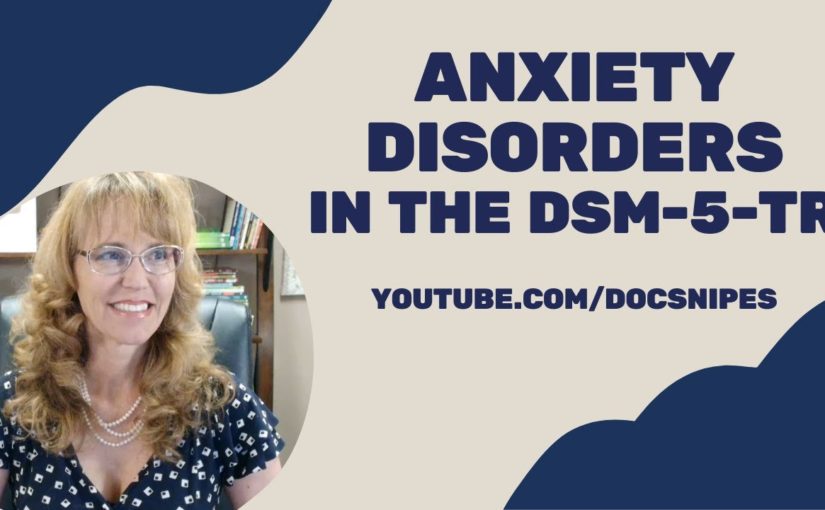
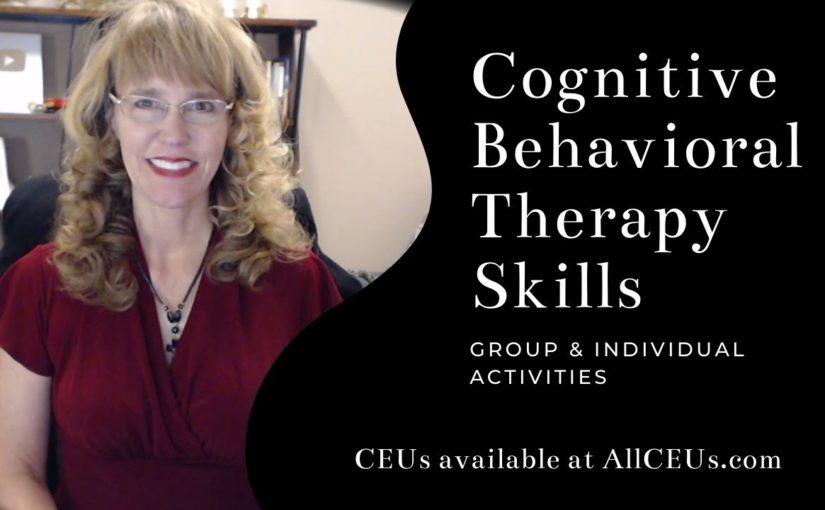
 If it was your best friend’s experience your best friend came to you and said I
just got into such-and-such college would you say awesome or would you say
anybody can get in there how would that go ask them what is scary about
accepting these positive things that you might have had an
accomplishment for some people it means that it might mean other people expect
more of them for other people they just don’t know how to accept the positive
They don’t know how to accept compliments they don’t know how to be
the center of attention and they don’t like it and then we want to look at why
that is sometimes we disqualify the positive because it fails to meet
someone else’s standards so as people might that be true here you know I know
When I was growing up and going through college and going through school and
everything got my doctorate but I will always not being not
a real doctor because a Ph.D. is not an MD and I’m like really
So is it somebody else’s standards or can I feel good about having a Ph.D. egocentrism My perspective is the only
perspective I’ll being egocentric but it doesn’t work
most of the time so encouraging people to take alternate perspectives
Maybe you’re texting with someone and they say something that is not what you
interpret as not the nicest thing and this happens in text messages a lot and
they get upset now an egocentric thinking error would say that purse is
just grumpy today Someone who’s taking other perspectives would stop and go
back and read the text and go I wonder if maybe this could have been taken some
other another you know obvious reaction is not what I intended
So egocentrism if you hold on to that I don’t understand anybody else because
You know I don’t see a problem with anything personalizing and mind-reading This is when you assume that everybody’s
frowning because of something you did your boss walks down the hallway
and looks at you and grimaces and continues to walk on oh I must have done
something wrong No maybe he just got out of his senior management meeting that
was five hours long and he’s got to go to the bathroom you know there could be
a hundred different explanations for why that happened so encourage clients to
ask themselves what some alternate explanations for this event that are
doesn’t involve me you know why this might have happened if they hold
on to that, I must have done something wrong but as soon as their boss calls
them up and goes hey can you come to my office for a second you know where their
thoughts are going to go I’m getting fired I’m going to get laid off I don’t
know what it was that I did wrong but he walked by me two weeks ago in the
hallway and grimaced and I’m just I’m the worst person in the whole world
But where did that come from so encouraging people to not necessarily
assume they know what’s going on in someone else’s mind and not
automatically attributing every person’s negative behavior to something they did
How often and then ask them how often has it been about you
now think about the last 10 times you’ve taken something personally how many of
Those 10 times has it been about something you did versus something with
the other person then the availability heuristic remembering what’s most
prominent in your mind so asking clients what the facts ah the most obvious
One that we talk about is plane crashes You know it is very dangerous to fly on a
plane because you hear about all those plane crashes well yeah you hear about
the airlines crashes but don’t hear about the 20,000 every day that land
safely so you remember it and it seems more dangerous because that’s what is in
your mind that’s what is available to you that’s what you’ve based your
thought processes on because maybe you didn’t know that 20,000 planes or more
fly and land just perfectly every day this can also be true with people
remembering what’s most prominent in your mind sometimes and this can be very
very true in domestically violent relationships if somebody falls in love
with someone and that person is just the greatest person since sliced bread for
the first four months and then the cycle starts and there’s this little tiny
a sliver of the honeymoon period after the battering cycle and the person’s like
That’s the person I fell in love with that’s what I remember and they try to
focus on that that’s most prominent in their mind and they ignore the rest of
the stuff so we need to encourage people to look objectively at the facts magnifying high and
low probability outcomes what are the chances that this is going to happen how
Many clients have worked with have gone to the doctor and gotten into a
physical or get a test run and then the doctor had to call them back and
This could be true for you too and the doctor had to call them back two or
Three days later when the tests came back from the lab and that whole three
days they were just in a panic because they
were afraid they were going to get some terminal diagnosis so thinking about
high and low probability outcomes another instance or example of
magnification is somebody that thinks this is the end of the world whatever it
I think I’ve told you before my little story about um tripping when I
was walking down the hall at work and falling and yeah it was embarrassing my
folders went everywhere and yeah but in that big scheme of things will it matter
That much from now you know are people going to think Oh she is such a clutch she
must be a ditz too no I mean they may have thought that at that time I don’t
know but you know in six months nobody’s going to remember and then ask them in
the past when something like this has happened when you’ve had to get a test
done and you’ve had to wait on results or if you’ve done something that was
embarrassing and you didn’t think you thought everybody was going to remember
it forever how did you tolerate it how did you learn to deal with it building
on those strengths that they already have all-or-nothing thinking errors
These are things like love versus hate I love them or I hate them it’s all or
Nothing she does this all the time or she never does it if I’m going to do it
I’m going to do it perfectly or I’m not going to do it at all thank you all good
intentions or all bad intentions you know sometimes we do things with good
intentions that have some bad repercussions so did we do it with all
Bad intentions are all good intentions and the answer is neither most of the
time life is kind of in that middle-ground gray area encouraging clients to
Look and find examples where something hasn’t been one of the polls when have
they done something that they’re proud of that wasn’t perfect or when again
When has somebody else done something that they were proud of that wasn’t
perfect remembering that with availability
heuristic remembering how often something happens and how long it’s
been since you’ve seen that behavior and remember that sometimes good times are
amazing but how frequent are they compared with the bad times another thinking error is a belief in a
just world or a fallacy of fairness I just asked clients to identify for good
people you know who’ve had bad things happen and in in reality we all have bad
things happen good people do bad people do in between people do attributional
errors and this is a pet of mine you know labeling yourself is not a behavior so
global versus specific and I am stupid versus I’m stupid at math I don’t have
good math skills it’s not about me it’s about the skills I can change skills
stable I am and I always will be versus it’s something I can change it’s
something I can learn internally It’s about me as a person versus it’s about a
skill deficit or something I could learn or change and there’s you know lots of
information on attributions out there on the internet if you need a refresher on
it but we find that a lot of people who have dysphoria have negative global
stable internal attributions so questions for clients remember the
beliefs equal thoughts and facts plus personal interpretation another way of
saying it is reality is 10% perception is 10% reality and 90% interpretation so
what are the facts for and against my belief is the belief based on facts or
Feelings Does the belief focus on one aspect or the whole situation Does the
belief seem to use any thinking errors what are alternate explanations what
Would you tell your child or best friend if they had this belief how would you
want someone to tell what would you want someone to tell you about this belief so
If you’re telling somebody about this what are you hoping they’re going to say
in return and finally, how is this belief moving you toward what and who is
important to you or moving you away from what or who is important to you now they
can do a worksheet and have all of these or you can pick one or two of these
questions that are most salient for your clients but they can have kind of at
their fingertips so as they’re going through the day and something happens
They can ask themselves ok what’s an alternate explanation Or you know
Whatever it is this salient for that client’s irrational thoughts how do these
thoughts impact the client’s emotions health relationships and perceptions of
the world you know this is what we want to ask them How is this thought
impacting you globally how may this thought have been helpful in the past
Where did it come from How does it make sense from when you formed it in the
past when you’re dealing with it ask the person if the thought is bringing you
closer to those that are important Are there any examples of this thought or
belief not being true and how can the statement be made less global less
all-encompassing so it’s about a specific incident a specific situation
less stable which means you can change it and less internal which means it’s
not about who you are as a person but maybe something that you do or a skill
that you have so we’re going to go through some of these thoughts real
Quickly here mistakes are never acceptable and if I make one it means
that I’m incompetent well never is kind of stable and I am incompetent is kind
of global, that’s also that extreme all-or-nothing thinking so you can see
where these cognitive distortions end up leading to unhelpful beliefs
When somebody disagrees with me it’s a personal attack Well there’s
Personalization If I ever heard it before maybe it’s not about you may be
They’re having a bad day and you just happen to be the unlucky target or maybe
they’re disagreeing with you because they have a different point of view and
It’s not a personal attack it’s just their point of view If someone
criticizes or rejects me there must be something wrong with me
personalization all-or-nothing thinking global stable and internal something
wrong with me as a person to feel good about myself others must approve of me
Now this is one we’ve talked about external validation before and we can’t
control other people to feel good about yourself how can you do that
Besides necessarily requiring other people to approve of you to be
content in life I must be liked by all people Wow I’ve never met anybody who’s
liked by all people I’ve never even met anybody who’s been hated by all people
but it’s important to help clients see how this is dramatic to say all
people and for them to be content everybody has to like them
I mean I like to be liked but if everybody doesn’t like me you know
That’s pretty understandable My true value as an individual depends on what
others think of me I would challenge this one this is all you know
Also very personally I would challenge people to look at and say it
so your child’s value as an individual depends on what other people think of
Most people would say no but the perspective thing nothing ever turns
out the way you want it to okay all-or-nothing thinking and probably
availability heuristic if something bad just happened then they may be focusing
on that which causes them to focus on all the other bad things in the past
that have happened not to focus on that is okay you know bad thing
happen but look at all these good things I won’t try anything new unless I will
be good at it this fear of failure fear of rejection
It just really paralyzes a lot of people when they get stuck with that thinking
the area that they have to be perfect I am in total control of anything bad that
happens is my fault well that’s egocentric and personal if
They think they’re in total control that’s their perception of how the world
Do they think if they’ve got everybody on marionette strings anything
bad in the world that happens is their fault how powerful are they
I feel happy about uh if I feel happy about life something will go wrong
It happens sometimes but let’s look at times when you’ve been happy that
something hasn’t gone wrong you know let’s get rid of that all-or-nothing
thinking it’s not my fault my life didn’t go the way I wanted could be true
but it seems like that’s making you unhappy so what do we do about that if
I’m not in an intimate relationship I’m alone
No, again that’s pretty extreme I’m either in an intimate relationship or I
am alone and a loner and you know it’s just me and my 17 cats which follows
with there’s no gray area so encouraging people to look at what these
beliefs are saying important thoughts impact behaviors and emotional and
Physical reactions emotional and physical reactions impact thoughts and
interpretations of events so if you do something and it’s pleasurable
and you have a great physical reaction you know let’s take bungee jumping or
Skydiving if you go out there and it’s scary but you do it and you’re just like
Whoa what a rush Your interpretation of that is probably going to be good which
means you’ll probably do it again if you go out there and it’s just the most
horrible experience you’ve ever had you’re probably not going to do it again
and your interpretation of it is going to be not good which is going to make it
hard to understand why other people would do it irrational
thinking patterns are often caused by cognitive distortions so let’s just look
back at some of those because there are a lot fewer cognitive distortions or
general ways of thinking about the world then there are thinking errors because
There are lots and lots of thinking errors Cognitive distortions are often schemas
which were formed based on faulty inaccurate or immature knowledge or
understanding and by identifying the thoughts of the hecklers you know the
automatic tapes that maintain our unhappiness the person can choose
whether to accept those thoughts or change them.
If it was your best friend’s experience your best friend came to you and said I
just got into such-and-such college would you say awesome or would you say
anybody can get in there how would that go ask them what is scary about
accepting these positive things that you might have had an
accomplishment for some people it means that it might mean other people expect
more of them for other people they just don’t know how to accept the positive
They don’t know how to accept compliments they don’t know how to be
the center of attention and they don’t like it and then we want to look at why
that is sometimes we disqualify the positive because it fails to meet
someone else’s standards so as people might that be true here you know I know
When I was growing up and going through college and going through school and
everything got my doctorate but I will always not being not
a real doctor because a Ph.D. is not an MD and I’m like really
So is it somebody else’s standards or can I feel good about having a Ph.D. egocentrism My perspective is the only
perspective I’ll being egocentric but it doesn’t work
most of the time so encouraging people to take alternate perspectives
Maybe you’re texting with someone and they say something that is not what you
interpret as not the nicest thing and this happens in text messages a lot and
they get upset now an egocentric thinking error would say that purse is
just grumpy today Someone who’s taking other perspectives would stop and go
back and read the text and go I wonder if maybe this could have been taken some
other another you know obvious reaction is not what I intended
So egocentrism if you hold on to that I don’t understand anybody else because
You know I don’t see a problem with anything personalizing and mind-reading This is when you assume that everybody’s
frowning because of something you did your boss walks down the hallway
and looks at you and grimaces and continues to walk on oh I must have done
something wrong No maybe he just got out of his senior management meeting that
was five hours long and he’s got to go to the bathroom you know there could be
a hundred different explanations for why that happened so encourage clients to
ask themselves what some alternate explanations for this event that are
doesn’t involve me you know why this might have happened if they hold
on to that, I must have done something wrong but as soon as their boss calls
them up and goes hey can you come to my office for a second you know where their
thoughts are going to go I’m getting fired I’m going to get laid off I don’t
know what it was that I did wrong but he walked by me two weeks ago in the
hallway and grimaced and I’m just I’m the worst person in the whole world
But where did that come from so encouraging people to not necessarily
assume they know what’s going on in someone else’s mind and not
automatically attributing every person’s negative behavior to something they did
How often and then ask them how often has it been about you
now think about the last 10 times you’ve taken something personally how many of
Those 10 times has it been about something you did versus something with
the other person then the availability heuristic remembering what’s most
prominent in your mind so asking clients what the facts ah the most obvious
One that we talk about is plane crashes You know it is very dangerous to fly on a
plane because you hear about all those plane crashes well yeah you hear about
the airlines crashes but don’t hear about the 20,000 every day that land
safely so you remember it and it seems more dangerous because that’s what is in
your mind that’s what is available to you that’s what you’ve based your
thought processes on because maybe you didn’t know that 20,000 planes or more
fly and land just perfectly every day this can also be true with people
remembering what’s most prominent in your mind sometimes and this can be very
very true in domestically violent relationships if somebody falls in love
with someone and that person is just the greatest person since sliced bread for
the first four months and then the cycle starts and there’s this little tiny
a sliver of the honeymoon period after the battering cycle and the person’s like
That’s the person I fell in love with that’s what I remember and they try to
focus on that that’s most prominent in their mind and they ignore the rest of
the stuff so we need to encourage people to look objectively at the facts magnifying high and
low probability outcomes what are the chances that this is going to happen how
Many clients have worked with have gone to the doctor and gotten into a
physical or get a test run and then the doctor had to call them back and
This could be true for you too and the doctor had to call them back two or
Three days later when the tests came back from the lab and that whole three
days they were just in a panic because they
were afraid they were going to get some terminal diagnosis so thinking about
high and low probability outcomes another instance or example of
magnification is somebody that thinks this is the end of the world whatever it
I think I’ve told you before my little story about um tripping when I
was walking down the hall at work and falling and yeah it was embarrassing my
folders went everywhere and yeah but in that big scheme of things will it matter
That much from now you know are people going to think Oh she is such a clutch she
must be a ditz too no I mean they may have thought that at that time I don’t
know but you know in six months nobody’s going to remember and then ask them in
the past when something like this has happened when you’ve had to get a test
done and you’ve had to wait on results or if you’ve done something that was
embarrassing and you didn’t think you thought everybody was going to remember
it forever how did you tolerate it how did you learn to deal with it building
on those strengths that they already have all-or-nothing thinking errors
These are things like love versus hate I love them or I hate them it’s all or
Nothing she does this all the time or she never does it if I’m going to do it
I’m going to do it perfectly or I’m not going to do it at all thank you all good
intentions or all bad intentions you know sometimes we do things with good
intentions that have some bad repercussions so did we do it with all
Bad intentions are all good intentions and the answer is neither most of the
time life is kind of in that middle-ground gray area encouraging clients to
Look and find examples where something hasn’t been one of the polls when have
they done something that they’re proud of that wasn’t perfect or when again
When has somebody else done something that they were proud of that wasn’t
perfect remembering that with availability
heuristic remembering how often something happens and how long it’s
been since you’ve seen that behavior and remember that sometimes good times are
amazing but how frequent are they compared with the bad times another thinking error is a belief in a
just world or a fallacy of fairness I just asked clients to identify for good
people you know who’ve had bad things happen and in in reality we all have bad
things happen good people do bad people do in between people do attributional
errors and this is a pet of mine you know labeling yourself is not a behavior so
global versus specific and I am stupid versus I’m stupid at math I don’t have
good math skills it’s not about me it’s about the skills I can change skills
stable I am and I always will be versus it’s something I can change it’s
something I can learn internally It’s about me as a person versus it’s about a
skill deficit or something I could learn or change and there’s you know lots of
information on attributions out there on the internet if you need a refresher on
it but we find that a lot of people who have dysphoria have negative global
stable internal attributions so questions for clients remember the
beliefs equal thoughts and facts plus personal interpretation another way of
saying it is reality is 10% perception is 10% reality and 90% interpretation so
what are the facts for and against my belief is the belief based on facts or
Feelings Does the belief focus on one aspect or the whole situation Does the
belief seem to use any thinking errors what are alternate explanations what
Would you tell your child or best friend if they had this belief how would you
want someone to tell what would you want someone to tell you about this belief so
If you’re telling somebody about this what are you hoping they’re going to say
in return and finally, how is this belief moving you toward what and who is
important to you or moving you away from what or who is important to you now they
can do a worksheet and have all of these or you can pick one or two of these
questions that are most salient for your clients but they can have kind of at
their fingertips so as they’re going through the day and something happens
They can ask themselves ok what’s an alternate explanation Or you know
Whatever it is this salient for that client’s irrational thoughts how do these
thoughts impact the client’s emotions health relationships and perceptions of
the world you know this is what we want to ask them How is this thought
impacting you globally how may this thought have been helpful in the past
Where did it come from How does it make sense from when you formed it in the
past when you’re dealing with it ask the person if the thought is bringing you
closer to those that are important Are there any examples of this thought or
belief not being true and how can the statement be made less global less
all-encompassing so it’s about a specific incident a specific situation
less stable which means you can change it and less internal which means it’s
not about who you are as a person but maybe something that you do or a skill
that you have so we’re going to go through some of these thoughts real
Quickly here mistakes are never acceptable and if I make one it means
that I’m incompetent well never is kind of stable and I am incompetent is kind
of global, that’s also that extreme all-or-nothing thinking so you can see
where these cognitive distortions end up leading to unhelpful beliefs
When somebody disagrees with me it’s a personal attack Well there’s
Personalization If I ever heard it before maybe it’s not about you may be
They’re having a bad day and you just happen to be the unlucky target or maybe
they’re disagreeing with you because they have a different point of view and
It’s not a personal attack it’s just their point of view If someone
criticizes or rejects me there must be something wrong with me
personalization all-or-nothing thinking global stable and internal something
wrong with me as a person to feel good about myself others must approve of me
Now this is one we’ve talked about external validation before and we can’t
control other people to feel good about yourself how can you do that
Besides necessarily requiring other people to approve of you to be
content in life I must be liked by all people Wow I’ve never met anybody who’s
liked by all people I’ve never even met anybody who’s been hated by all people
but it’s important to help clients see how this is dramatic to say all
people and for them to be content everybody has to like them
I mean I like to be liked but if everybody doesn’t like me you know
That’s pretty understandable My true value as an individual depends on what
others think of me I would challenge this one this is all you know
Also very personally I would challenge people to look at and say it
so your child’s value as an individual depends on what other people think of
Most people would say no but the perspective thing nothing ever turns
out the way you want it to okay all-or-nothing thinking and probably
availability heuristic if something bad just happened then they may be focusing
on that which causes them to focus on all the other bad things in the past
that have happened not to focus on that is okay you know bad thing
happen but look at all these good things I won’t try anything new unless I will
be good at it this fear of failure fear of rejection
It just really paralyzes a lot of people when they get stuck with that thinking
the area that they have to be perfect I am in total control of anything bad that
happens is my fault well that’s egocentric and personal if
They think they’re in total control that’s their perception of how the world
Do they think if they’ve got everybody on marionette strings anything
bad in the world that happens is their fault how powerful are they
I feel happy about uh if I feel happy about life something will go wrong
It happens sometimes but let’s look at times when you’ve been happy that
something hasn’t gone wrong you know let’s get rid of that all-or-nothing
thinking it’s not my fault my life didn’t go the way I wanted could be true
but it seems like that’s making you unhappy so what do we do about that if
I’m not in an intimate relationship I’m alone
No, again that’s pretty extreme I’m either in an intimate relationship or I
am alone and a loner and you know it’s just me and my 17 cats which follows
with there’s no gray area so encouraging people to look at what these
beliefs are saying important thoughts impact behaviors and emotional and
Physical reactions emotional and physical reactions impact thoughts and
interpretations of events so if you do something and it’s pleasurable
and you have a great physical reaction you know let’s take bungee jumping or
Skydiving if you go out there and it’s scary but you do it and you’re just like
Whoa what a rush Your interpretation of that is probably going to be good which
means you’ll probably do it again if you go out there and it’s just the most
horrible experience you’ve ever had you’re probably not going to do it again
and your interpretation of it is going to be not good which is going to make it
hard to understand why other people would do it irrational
thinking patterns are often caused by cognitive distortions so let’s just look
back at some of those because there are a lot fewer cognitive distortions or
general ways of thinking about the world then there are thinking errors because
There are lots and lots of thinking errors Cognitive distortions are often schemas
which were formed based on faulty inaccurate or immature knowledge or
understanding and by identifying the thoughts of the hecklers you know the
automatic tapes that maintain our unhappiness the person can choose
whether to accept those thoughts or change them.

 The Market WeekSign Up For The Free Newsletter No nonsense, no spam, unsubscribe anytime You can unsubscribe at any time. Read our privacy policy. Financial disclaimer: The Market Week is a general interest newsletter that is not liable for the suitability or future investment performance of any securities or strategies discussed. Readers are advised that the material contained herein should be used solely for informational purposes. As a financial newsletter publisher of general and regular circulation, we cannot tender individual investment advice. Read our full disclaimer.
The Market WeekSign Up For The Free Newsletter No nonsense, no spam, unsubscribe anytime You can unsubscribe at any time. Read our privacy policy. Financial disclaimer: The Market Week is a general interest newsletter that is not liable for the suitability or future investment performance of any securities or strategies discussed. Readers are advised that the material contained herein should be used solely for informational purposes. As a financial newsletter publisher of general and regular circulation, we cannot tender individual investment advice. Read our full disclaimer. 
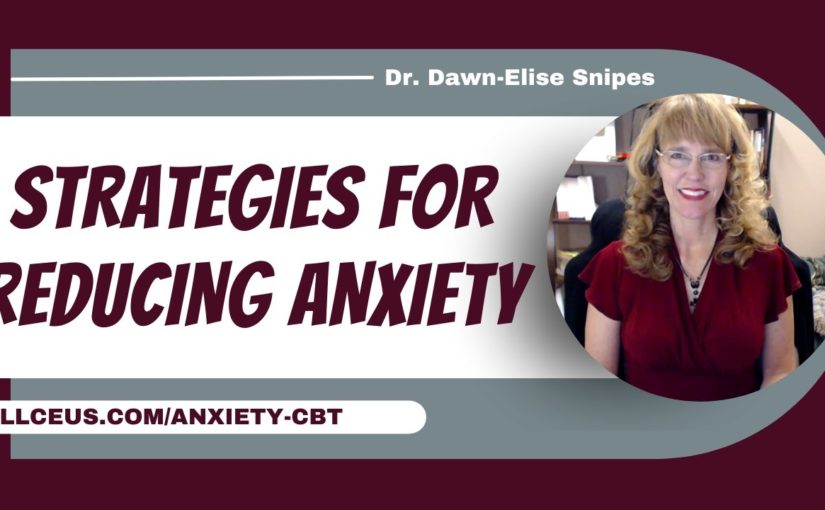
 Snipes by subscribing
at all CEUs comm slash counselor toolbox, this episode has been brought to you in part by all
CEUs calmly provide 24/7 multimedia continuing education and pre-certification training to
counselors therapists and nurses since 2006 have used coupon code consular toolbox to get
a 20% discount on your order this month.
Snipes by subscribing
at all CEUs comm slash counselor toolbox, this episode has been brought to you in part by all
CEUs calmly provide 24/7 multimedia continuing education and pre-certification training to
counselors therapists and nurses since 2006 have used coupon code consular toolbox to get
a 20% discount on your order this month.





















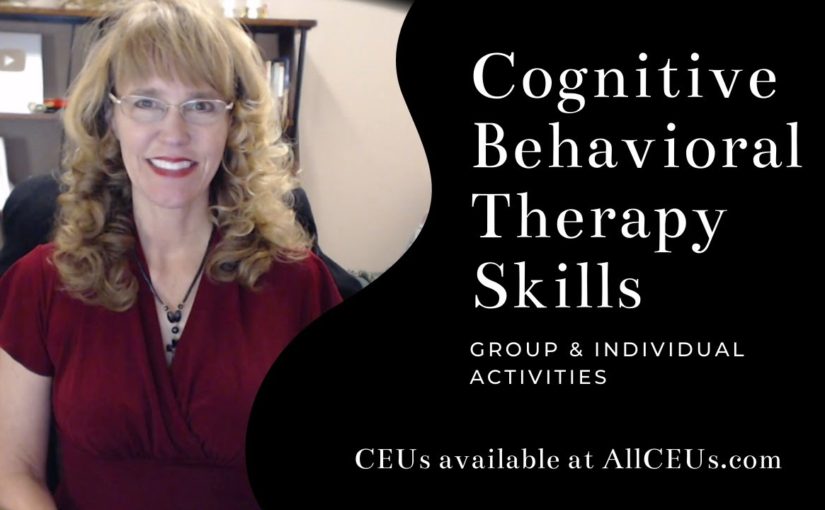



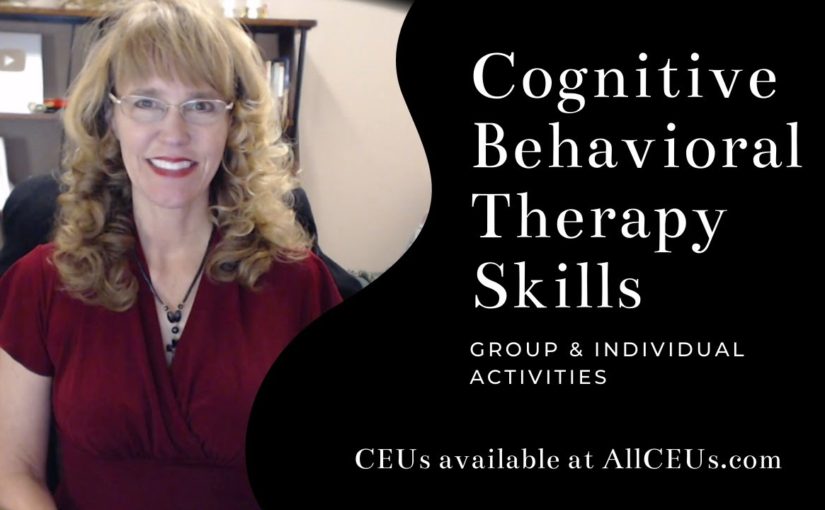

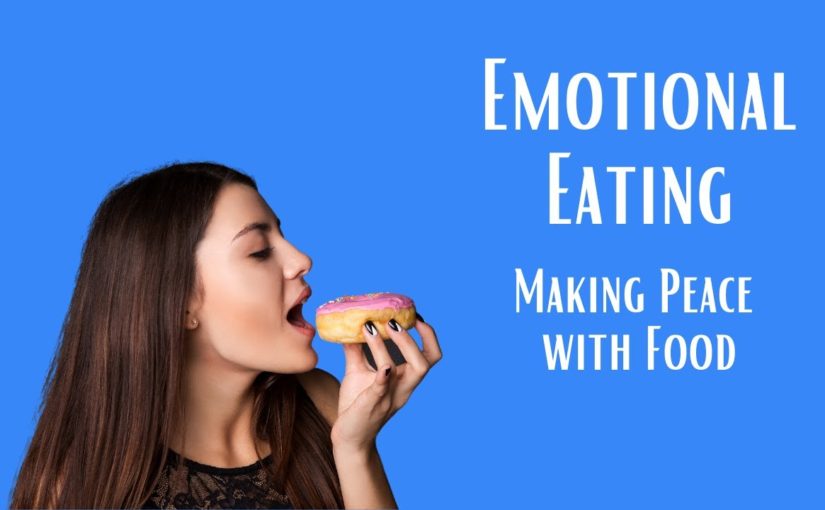


 If you will, I don’t keep them in the house, but I will allow myself occasionally to buy a small snack-size pack of M Ms, when I’m out or I will get a regular-size pack and I’ll share it with my daughter, so I’m not restricting it.I’m not saying I can never M. Ms again, I’m just not making it available to myself when I might have some unrestricted time, try to avoid buying a bunch of comfort foods and keeping them around the house, and when you’ve got kids when you’ve got family, it’s not entirely possible, usually to not have some of that stuff around but try to avoid having the things that you particularly used for comfort, because if it’s not readily available, then you’ve got to focus on guess what dealing with the emotions.Instead of stuffing them with food, try not to go too long without eating.Like I said earlier, if you go too long, then by the time you get to the food, your blood, Sugar,’s low and you’re just shoveling it as fast as you can initially distract.If you know that you’re getting you’re eating and you’re, like I’m – really not hungry, but I want to eat, take a bath, take a walk, call a friend, heaven forbid get on Facebook.Whatever it is, you can do to distract yourself for 10 or 15 minutes if, after 10 or 15 minutes, you’re still going, I want whatever it is, then you can decide what to do about it.Then, most of the time when people stop and go, I’m not hungry.Let me distract myself.They get caught up in that distraction and before they know it, they’ve forgotten about the craving, and identify the emotions.If you know that you’re not hungry, but you want to eat, then say: okay, what’s going on what’s going on with me? It doesn’t mean that the person is never going to eat when, when they’re upset, because a lot of people do, and is it the end of the world, probably not necessary if they can start reducing the frequency of times that they eat.In response to emotional distress that’s, what we want, we want to progress, not perfect if it’s, depression, what’s causing them to feel hopeless or helpless right now, if it’s, stress, anxiety, or anger, remember our big kind of lump together stuff. What are they stressing out about? Do they feel like they’re overwhelmed? Are they afraid of failure, rejection, and loss of control of the unknown? We’ve gone through those things.We want them to identify what’s going on with them, and then they can make better choices about how to deal with it.So general coping helps them develop, alternate ways of coping with distress.Distract we’ve, already kind of gone over that one.I encourage people – and you know it’s – one of those DBT things – that a lot of therapists encourage their clients to keep a list of things.They can do to distract themselves because it’s not always practical to get up and go on a walk.If you’re at work or it’s, you know two in the morning.So what else can you do to distract yourself? Talk it out with a friend with yourself with your dog? Sometimes you just got to get it out.People who are more auditory will prefer talking it out as opposed to journaling it now.If they talk it out with themselves, they can record it if they want to, or sometimes it’s just better to have a dialogue with themself. If it worked for Freud, it can work for other people journaling.If your clients are inclined to journal, encourage them to write it down.Sometimes just getting stuff out of your head and onto paper will help the feelings dissipate a little bit.So you’re not mulling them over and obsessing over them and getting stuck in those thoughts and feelings.Additionally, while you’re distracted talking it out or journaling, this is also your break.Your stop between the urge and the behavior make a pro and con list of the de-stress, not the eating whatever it is, that’s stressing you out and how can you fix it or what are the pros of this situation and what are the downsides To this situation, encourage them to focus on the positive.You know.If something stressing you out at work, you know you’ve got a big meeting coming up or something you don’t want to do or what it is.You can get stuck on focusing on that or you can focus on the positive that you do have a job.That meeting only comes around once a month. You can it’s time you don’t have to be doing paperwork whatever the pros are for that person encourage them to focus on the positive.If you’re distressed because of some kind of a failure or perceived failure, figure out what you learned from it, whether it was a relationship failure, or maybe you learned what not to do in a relationship anymore. Maybe you learned things that you may have ignored.Maybe you learned what you should have done instead, but how can it be a learning opportunity, instead of somewhere to stay stuck and finally, if something’s making you upset if something’s causing anxiety, depression, hopelessness, helplessness, whatever the negative feeling figure out.If it’s worth your energy to get stuck here, is it worth the turmoil? Is it worth you know having to pacify yourself with food or whatever? It is a lot of times people say you know what now it’s, just it’s, not even worth my effort.It’s not worth moving me away from my goals, because my goal is to stop emotional eating.My goal is to eat for hunger, so I can go to dinner with people and feel comfortable.I can be at a party where there’s a buffet and not feel stressed out that I’m going to go and eat half the stuff on the buffet that’s my goal so is holding on to whatever this de-stress is getting me Closer to being able to do those things and generally the answer:’s no develop alternate ways of coping with the stress the ABCs, the a is the activating event.What is stressing you out and what’s causing the de-stress C is the emotional reaction.Angry depressed stressed, whatever be: are your behaviors? What behaviors or B are your beliefs? Sorry, what are the beliefs that are in there that may need to be addressed? What kind of things are you telling yourself, and, and how can you counter them? Cognitively eliminate your vulnerabilities.You knew we couldn’t get through a presentation without talking about vulnerabilities. If someone is well-rested.Well, the fed has a good social support network, not stretch timewise.Then it will be easier to deal with stress or stressors when they come your way.You’ll have more energy to deal with it, so there won’t be this overwhelming feeling of I just want to bury my head in a jar of peanut butter, be compassionate with yourself.Some days, you know you’re, just going to feel anxious.You’re going to feel depressed.You’re going to get angry.You can beat yourself up over it and you know a lot of people do.Is that the best use of your energy or can you be compassionate? Can you learn from it? Can you give yourself a break and go? You know what I’m having a bad day today and that’s okay, I’m not going to unpack and stay here, but I’m not going to fight.It either helps clients learn how to urge surf help. They understand that, just like a panic attack just like a wave just like a lot of other things in life, it will come, it will crest and it will go out again, so they can sort of identify where they are on the energy of that Urge other tools people can use close the kitchen once I have the kitchen cleaned and you know all the dishes are done and it looks pretty.I hate going in there and finding dishes in the sink again now I’ve got teenagers, so we always have dishes in the sink.But before I had children, you know at seven o’clock.I finished all the dishes and closed the kitchen, and that would be enough motivation for me to not go in there and at least not use plates and stuff to eat.So if we’re saying that we’re going to only eat using utensils plates and sitting and all that stuff that we already talked about, then once you close the kitchen, you’re not going back in, there turn off the light.That also helps so you’re not being attracted to the pretty lights, and you know all the goodies that are in the kitchen to brush your teeth.This is something my grandmother used to do and it works.There’s some research behind it.Minty flavors reduce our appetite.So if you brush your teeth, you get all the other flavors out of your mouth and it reduces your urges to eat because it again it’s clean and fresh. And do you really want to brush your teeth again, and meditate, sometimes just getting in a space where you’re, not obsessing about anything, can help people get past that urge to self-soothe by eating a CT for emotional eating.What am I feeling or thinking about what’s going on with me right now? What is important to me? So if I am thinking I want to eat, I want to you know just dive into this jar of peanut butter, and then I think about what’s important to me.Is it important to me to get control of this? Is it important to me to you know, be able to fit into my clothes in six months or not? So what is it in? What way is controlling my eating habits and eliminating emotional eating important to me, and how does that get me closer to other things that are important to me, and what other things could I do? That would get me closer to my goals.So if the goal is to have improved relationships, be able to feel more comfortable around food reduce the stress around going out to eat, and just around food in general, what else can you do when you are stressed out? Somebody also suggested that adding a blue light in the refrigerator decreases the appeal of foods, which is interesting because yellow red and orange, and browns, I think Pizza Hut – are all foods that increase people’s, hunger and desire to eat.But blue is just a completely different primary color, and adding a blue hue seems like that would be effective, so cool thanks for that.Little tidbit there holiday help, and you know we’re coming into the holidays.So I’ve got to bring that up at every single glass and choose lower-calorie foods.If you tend to get stressed out or caught up or mindlessly eat when you are at family gatherings.Okay, you know cut yourself a break, know that that’s, probably going to happen, and fill up on the lower-calorie foods.The carrot sticks the broccoli, the white meat, turkey, anything that’s available, that’s, not like sweet potato pie or brownies, keep water or low-calorie beverage. In your hand, if you’ve got your hand full, you can’t eat at the same time.So you know if you walk around with a cup in your hand, it helps talk to people.Hopefully, you don’t talk with your mouth open or talk with food in your mouth.So if you’re talking to people, you’re not going to be as inclined to go and get something to eat because you’re wanting to stay engaged in that conversation.Stay away from the buffet, especially if you know that it could get stressful, or maybe you know for me, I turn into a pumpkin at like 7 30 at night.I get up at 4 00, but I turn into a pumpkin at 7, 30 and a lot of times holiday parties and those sorts of things are at eight, nine, o’clock at night, and you know I’ve already turned into a pumpkin.So I know that if I go to those I’m going to be more likely to eat just to kind of stay away because I’m tired and it’s a bad habit.It’s not because I’m hungry.So I know I need to stay away from the buffet during those times we rehearse refusal skills.If somebody says. Oh, you, I’ve got to try it by two.This figure out how you’re going to address that ahead of time, because there’s generally probably a lot of really good foods, and you may really want to taste some, but sometimes people who emotionally eat know if they start eating.If they start eating high-fat high calorie foods, they’re going to want to eat everything.So if I start with one bite of a brownie, I’m going to want to eat every suit that’s on the table.If they know that, then they may want to choose to not even go down that road at that juncture, encourage people to stay mindful of their distress meter before they go back for another helping and ask themselves, am I hungry? Am I just wanting to taste what’s here and how do I feel about that? Or am I eating just because I don’t want to be here and I’m bored and I want to fill the time? Have people keep an index card with their coping mantra and two reasons they don’t want to emotionally eat, so I need to be here.I can do this whatever the mantra is that’s going to get them through the night, whatever they’re.Telling themselves that it’s going to help them plow through and make the right choices, but also two reasons that they don’t want to eat, or they’re going to get around it.Maybe they’ve got something at home that they can eat when they get home eating before they go to.The party may also help prevent some grazing holidays, bringing out a lot of emotions in people.Some people struggle with depression, anxiety, jealousy, grief, and anger. You know the whole gamut during this time and during this time there’s food everywhere I mean starting at Halloween when your kids bring home the Halloween candy, which usually lasts about a week in our house baby.Oh, Halloween candy followed by getting ready for Thanksgiving, followed by doing all the baking or whatever you do, and the holiday parties coming up on the December holiday season.There’s just food everywhere, so it’s really easy to cope.If you will, with stress being overwhelmed with being tired by not eating enough healthy food by binging on unhealthy and soothing food if you will so it’s, encouraged it’s important to encourage people to stay.Mindful of why they’re eating what they’re eating, when constantly bombarded with high-fat high carbohydrate foods, people are tempted to eat to feel calm yeah.I challenge anybody to say that they’ve never eaten and go okay.You know I’m.Just focused on this right now I’m not thinking about everything out here and it feels good um.I’m good now, good, probably not the word I should use, but it does help people distract themselves sometimes when they eat, especially those high-intensity foods.You feel happier serotonins are released. Dopamine is released.You’re, like oh, that’s good.I want to do that again or you just feel numb.You can get into a zone where you’re just eating and not caring about it’s.Not that you’re feeling calm, you’re just not feeling anything, and a lot of times when people get into that zone.They’re not tasting the food either.They’re just kind of on autopilot for emotional eating, like most other escape behaviors.Never addresses the underlying emotions and their causes, so we need to look at them.Are you feeling anxious? Are you feeling jittery? Are you feeling depressed because your blood Sugar’s low, because you’re nutritionally deficient because you’re not getting enough sleep or because there’s something cognitive going on, or all of the above emotional eating, often results in physical issues like weight gain Poor sleep and reduced energy weight gain, are you know in and of itself a few pounds here and they’re not a big deal, but some people can start emotionally eating to feel better.They gained a lot of weight. Then they start feeling less energetic.It starts being harder to move around.They get to the point where they are clinically obese.Then they’re going.I’m never going to take all this weight off.They feel hopeless and helpless.You see where this is going, so they eat some more.Can cause poor sleep apnea, it’s hard to get it’s also hard to get comfortable.Sometimes, if you’ve eaten a whole bunch of food right before you go to bed, you know your bellies are all full, and little you wake up.The next morning and your belly are still awful, which means you probably didn’t, sleep very well the night before and emotional eating often results in reduced energy because the foods we binge on the foods we eat for self-soothing often end up causing a sugar Crash some people try to undo emotional eating by restricting other calories which can lead to nutritional deficits and more cravings. I had a girlfriend when I was in high school and you know think back to I don’t know if they still do it, but when we were in high school there was always some kind of candy sale going on and she would always forgo all Other food, so she could have two chocolate bars each day and you know we’re not going to get into the all the other issues surrounding only eating two chocolate bars.But the point I’m making it right now is the fact she wasn’t getting protein.She wasn’t getting it.You know most of her vitamins and minerals and stuff that her body needed to make the neurotransmitter.So she could feel happy and she was contributing to a sugar crash, but I also know that it’s common around the holidays for people to do this.They’ll let go all day without eating because they know they’re going to a party tonight and there’s going to be a lot of really good food doing that once in a while.Not a big deal doing that 10 or 15 times in a month could start to have problems.Emotional eaters need to first find a way to stop before they eat, so, whether it’s writing in a journal or adding.There are a lot of apps on your phone that you can put your food in, even if you’re, not writing about your emotions and your cravings and all that kind of stuff.Sometimes it’s enough to make people stop before they reach. For the food – or you know, kind of an extreme way to go is to not keep pre-processed or prepackaged foods in the house.So anything that you’re going to eat you’ve got to make second identify the underlying reason for your eating figure out.Do I generally eat in response to and then address the thoughts and emotions leading to the urges?So if you figure out the underlying emotions for your eating or your depression, then what thoughts are maintaining that depression? And how can you address it once you address the underlying issues, some of the emotional eating will go away, but some of its habits?We’re going to have to break that habit and, throughout you know, the past couple of decades of working with people.My experience has been the majority of the time people don’t want to hear.Well, once you deal with your emotional issues, the emotional eating will go away now.They’re there because they want to stop that behavior right now.So, yes, we need to work on all the underlying issues but give them a tip or a trick or a tool whatever you want to call it to use before they walk out of your office after every single session.That way, they have something else they can put in their toolbox and feel more empowered to have control over what’s going on with them. And what’s coming their way, having the knowledge of what and why is 80 of helping them get to the recovery point now, if there’s co-occurring or if the eating issues are more than just emotional eating, if there’s, the person meets The criteria for binge eating disorder, bulimia or anorexia.There are a lot of other underlying issues they’re going to have to be dealt with.So I don’t want to trivialize that, but I do want people to feel like they’ve got some hope over what’s going on.Are there any questions? If you enjoy this podcast, please like and subscribe either in your podcast player or on YouTube, you can attend and participate in our live webinars with doctor Snipes by subscribing at all CEUs comm slash counselor toolbox.This episode has been brought to you in part by all CEUs com providing 24 7 multimedia, continuing education, and pre-certification; training to counselors therapists, and nurses, since 2006 use coupon code consular toolbox to get a 20 discount off your order.This month,
If you will, I don’t keep them in the house, but I will allow myself occasionally to buy a small snack-size pack of M Ms, when I’m out or I will get a regular-size pack and I’ll share it with my daughter, so I’m not restricting it.I’m not saying I can never M. Ms again, I’m just not making it available to myself when I might have some unrestricted time, try to avoid buying a bunch of comfort foods and keeping them around the house, and when you’ve got kids when you’ve got family, it’s not entirely possible, usually to not have some of that stuff around but try to avoid having the things that you particularly used for comfort, because if it’s not readily available, then you’ve got to focus on guess what dealing with the emotions.Instead of stuffing them with food, try not to go too long without eating.Like I said earlier, if you go too long, then by the time you get to the food, your blood, Sugar,’s low and you’re just shoveling it as fast as you can initially distract.If you know that you’re getting you’re eating and you’re, like I’m – really not hungry, but I want to eat, take a bath, take a walk, call a friend, heaven forbid get on Facebook.Whatever it is, you can do to distract yourself for 10 or 15 minutes if, after 10 or 15 minutes, you’re still going, I want whatever it is, then you can decide what to do about it.Then, most of the time when people stop and go, I’m not hungry.Let me distract myself.They get caught up in that distraction and before they know it, they’ve forgotten about the craving, and identify the emotions.If you know that you’re not hungry, but you want to eat, then say: okay, what’s going on what’s going on with me? It doesn’t mean that the person is never going to eat when, when they’re upset, because a lot of people do, and is it the end of the world, probably not necessary if they can start reducing the frequency of times that they eat.In response to emotional distress that’s, what we want, we want to progress, not perfect if it’s, depression, what’s causing them to feel hopeless or helpless right now, if it’s, stress, anxiety, or anger, remember our big kind of lump together stuff. What are they stressing out about? Do they feel like they’re overwhelmed? Are they afraid of failure, rejection, and loss of control of the unknown? We’ve gone through those things.We want them to identify what’s going on with them, and then they can make better choices about how to deal with it.So general coping helps them develop, alternate ways of coping with distress.Distract we’ve, already kind of gone over that one.I encourage people – and you know it’s – one of those DBT things – that a lot of therapists encourage their clients to keep a list of things.They can do to distract themselves because it’s not always practical to get up and go on a walk.If you’re at work or it’s, you know two in the morning.So what else can you do to distract yourself? Talk it out with a friend with yourself with your dog? Sometimes you just got to get it out.People who are more auditory will prefer talking it out as opposed to journaling it now.If they talk it out with themselves, they can record it if they want to, or sometimes it’s just better to have a dialogue with themself. If it worked for Freud, it can work for other people journaling.If your clients are inclined to journal, encourage them to write it down.Sometimes just getting stuff out of your head and onto paper will help the feelings dissipate a little bit.So you’re not mulling them over and obsessing over them and getting stuck in those thoughts and feelings.Additionally, while you’re distracted talking it out or journaling, this is also your break.Your stop between the urge and the behavior make a pro and con list of the de-stress, not the eating whatever it is, that’s stressing you out and how can you fix it or what are the pros of this situation and what are the downsides To this situation, encourage them to focus on the positive.You know.If something stressing you out at work, you know you’ve got a big meeting coming up or something you don’t want to do or what it is.You can get stuck on focusing on that or you can focus on the positive that you do have a job.That meeting only comes around once a month. You can it’s time you don’t have to be doing paperwork whatever the pros are for that person encourage them to focus on the positive.If you’re distressed because of some kind of a failure or perceived failure, figure out what you learned from it, whether it was a relationship failure, or maybe you learned what not to do in a relationship anymore. Maybe you learned things that you may have ignored.Maybe you learned what you should have done instead, but how can it be a learning opportunity, instead of somewhere to stay stuck and finally, if something’s making you upset if something’s causing anxiety, depression, hopelessness, helplessness, whatever the negative feeling figure out.If it’s worth your energy to get stuck here, is it worth the turmoil? Is it worth you know having to pacify yourself with food or whatever? It is a lot of times people say you know what now it’s, just it’s, not even worth my effort.It’s not worth moving me away from my goals, because my goal is to stop emotional eating.My goal is to eat for hunger, so I can go to dinner with people and feel comfortable.I can be at a party where there’s a buffet and not feel stressed out that I’m going to go and eat half the stuff on the buffet that’s my goal so is holding on to whatever this de-stress is getting me Closer to being able to do those things and generally the answer:’s no develop alternate ways of coping with the stress the ABCs, the a is the activating event.What is stressing you out and what’s causing the de-stress C is the emotional reaction.Angry depressed stressed, whatever be: are your behaviors? What behaviors or B are your beliefs? Sorry, what are the beliefs that are in there that may need to be addressed? What kind of things are you telling yourself, and, and how can you counter them? Cognitively eliminate your vulnerabilities.You knew we couldn’t get through a presentation without talking about vulnerabilities. If someone is well-rested.Well, the fed has a good social support network, not stretch timewise.Then it will be easier to deal with stress or stressors when they come your way.You’ll have more energy to deal with it, so there won’t be this overwhelming feeling of I just want to bury my head in a jar of peanut butter, be compassionate with yourself.Some days, you know you’re, just going to feel anxious.You’re going to feel depressed.You’re going to get angry.You can beat yourself up over it and you know a lot of people do.Is that the best use of your energy or can you be compassionate? Can you learn from it? Can you give yourself a break and go? You know what I’m having a bad day today and that’s okay, I’m not going to unpack and stay here, but I’m not going to fight.It either helps clients learn how to urge surf help. They understand that, just like a panic attack just like a wave just like a lot of other things in life, it will come, it will crest and it will go out again, so they can sort of identify where they are on the energy of that Urge other tools people can use close the kitchen once I have the kitchen cleaned and you know all the dishes are done and it looks pretty.I hate going in there and finding dishes in the sink again now I’ve got teenagers, so we always have dishes in the sink.But before I had children, you know at seven o’clock.I finished all the dishes and closed the kitchen, and that would be enough motivation for me to not go in there and at least not use plates and stuff to eat.So if we’re saying that we’re going to only eat using utensils plates and sitting and all that stuff that we already talked about, then once you close the kitchen, you’re not going back in, there turn off the light.That also helps so you’re not being attracted to the pretty lights, and you know all the goodies that are in the kitchen to brush your teeth.This is something my grandmother used to do and it works.There’s some research behind it.Minty flavors reduce our appetite.So if you brush your teeth, you get all the other flavors out of your mouth and it reduces your urges to eat because it again it’s clean and fresh. And do you really want to brush your teeth again, and meditate, sometimes just getting in a space where you’re, not obsessing about anything, can help people get past that urge to self-soothe by eating a CT for emotional eating.What am I feeling or thinking about what’s going on with me right now? What is important to me? So if I am thinking I want to eat, I want to you know just dive into this jar of peanut butter, and then I think about what’s important to me.Is it important to me to get control of this? Is it important to me to you know, be able to fit into my clothes in six months or not? So what is it in? What way is controlling my eating habits and eliminating emotional eating important to me, and how does that get me closer to other things that are important to me, and what other things could I do? That would get me closer to my goals.So if the goal is to have improved relationships, be able to feel more comfortable around food reduce the stress around going out to eat, and just around food in general, what else can you do when you are stressed out? Somebody also suggested that adding a blue light in the refrigerator decreases the appeal of foods, which is interesting because yellow red and orange, and browns, I think Pizza Hut – are all foods that increase people’s, hunger and desire to eat.But blue is just a completely different primary color, and adding a blue hue seems like that would be effective, so cool thanks for that.Little tidbit there holiday help, and you know we’re coming into the holidays.So I’ve got to bring that up at every single glass and choose lower-calorie foods.If you tend to get stressed out or caught up or mindlessly eat when you are at family gatherings.Okay, you know cut yourself a break, know that that’s, probably going to happen, and fill up on the lower-calorie foods.The carrot sticks the broccoli, the white meat, turkey, anything that’s available, that’s, not like sweet potato pie or brownies, keep water or low-calorie beverage. In your hand, if you’ve got your hand full, you can’t eat at the same time.So you know if you walk around with a cup in your hand, it helps talk to people.Hopefully, you don’t talk with your mouth open or talk with food in your mouth.So if you’re talking to people, you’re not going to be as inclined to go and get something to eat because you’re wanting to stay engaged in that conversation.Stay away from the buffet, especially if you know that it could get stressful, or maybe you know for me, I turn into a pumpkin at like 7 30 at night.I get up at 4 00, but I turn into a pumpkin at 7, 30 and a lot of times holiday parties and those sorts of things are at eight, nine, o’clock at night, and you know I’ve already turned into a pumpkin.So I know that if I go to those I’m going to be more likely to eat just to kind of stay away because I’m tired and it’s a bad habit.It’s not because I’m hungry.So I know I need to stay away from the buffet during those times we rehearse refusal skills.If somebody says. Oh, you, I’ve got to try it by two.This figure out how you’re going to address that ahead of time, because there’s generally probably a lot of really good foods, and you may really want to taste some, but sometimes people who emotionally eat know if they start eating.If they start eating high-fat high calorie foods, they’re going to want to eat everything.So if I start with one bite of a brownie, I’m going to want to eat every suit that’s on the table.If they know that, then they may want to choose to not even go down that road at that juncture, encourage people to stay mindful of their distress meter before they go back for another helping and ask themselves, am I hungry? Am I just wanting to taste what’s here and how do I feel about that? Or am I eating just because I don’t want to be here and I’m bored and I want to fill the time? Have people keep an index card with their coping mantra and two reasons they don’t want to emotionally eat, so I need to be here.I can do this whatever the mantra is that’s going to get them through the night, whatever they’re.Telling themselves that it’s going to help them plow through and make the right choices, but also two reasons that they don’t want to eat, or they’re going to get around it.Maybe they’ve got something at home that they can eat when they get home eating before they go to.The party may also help prevent some grazing holidays, bringing out a lot of emotions in people.Some people struggle with depression, anxiety, jealousy, grief, and anger. You know the whole gamut during this time and during this time there’s food everywhere I mean starting at Halloween when your kids bring home the Halloween candy, which usually lasts about a week in our house baby.Oh, Halloween candy followed by getting ready for Thanksgiving, followed by doing all the baking or whatever you do, and the holiday parties coming up on the December holiday season.There’s just food everywhere, so it’s really easy to cope.If you will, with stress being overwhelmed with being tired by not eating enough healthy food by binging on unhealthy and soothing food if you will so it’s, encouraged it’s important to encourage people to stay.Mindful of why they’re eating what they’re eating, when constantly bombarded with high-fat high carbohydrate foods, people are tempted to eat to feel calm yeah.I challenge anybody to say that they’ve never eaten and go okay.You know I’m.Just focused on this right now I’m not thinking about everything out here and it feels good um.I’m good now, good, probably not the word I should use, but it does help people distract themselves sometimes when they eat, especially those high-intensity foods.You feel happier serotonins are released. Dopamine is released.You’re, like oh, that’s good.I want to do that again or you just feel numb.You can get into a zone where you’re just eating and not caring about it’s.Not that you’re feeling calm, you’re just not feeling anything, and a lot of times when people get into that zone.They’re not tasting the food either.They’re just kind of on autopilot for emotional eating, like most other escape behaviors.Never addresses the underlying emotions and their causes, so we need to look at them.Are you feeling anxious? Are you feeling jittery? Are you feeling depressed because your blood Sugar’s low, because you’re nutritionally deficient because you’re not getting enough sleep or because there’s something cognitive going on, or all of the above emotional eating, often results in physical issues like weight gain Poor sleep and reduced energy weight gain, are you know in and of itself a few pounds here and they’re not a big deal, but some people can start emotionally eating to feel better.They gained a lot of weight. Then they start feeling less energetic.It starts being harder to move around.They get to the point where they are clinically obese.Then they’re going.I’m never going to take all this weight off.They feel hopeless and helpless.You see where this is going, so they eat some more.Can cause poor sleep apnea, it’s hard to get it’s also hard to get comfortable.Sometimes, if you’ve eaten a whole bunch of food right before you go to bed, you know your bellies are all full, and little you wake up.The next morning and your belly are still awful, which means you probably didn’t, sleep very well the night before and emotional eating often results in reduced energy because the foods we binge on the foods we eat for self-soothing often end up causing a sugar Crash some people try to undo emotional eating by restricting other calories which can lead to nutritional deficits and more cravings. I had a girlfriend when I was in high school and you know think back to I don’t know if they still do it, but when we were in high school there was always some kind of candy sale going on and she would always forgo all Other food, so she could have two chocolate bars each day and you know we’re not going to get into the all the other issues surrounding only eating two chocolate bars.But the point I’m making it right now is the fact she wasn’t getting protein.She wasn’t getting it.You know most of her vitamins and minerals and stuff that her body needed to make the neurotransmitter.So she could feel happy and she was contributing to a sugar crash, but I also know that it’s common around the holidays for people to do this.They’ll let go all day without eating because they know they’re going to a party tonight and there’s going to be a lot of really good food doing that once in a while.Not a big deal doing that 10 or 15 times in a month could start to have problems.Emotional eaters need to first find a way to stop before they eat, so, whether it’s writing in a journal or adding.There are a lot of apps on your phone that you can put your food in, even if you’re, not writing about your emotions and your cravings and all that kind of stuff.Sometimes it’s enough to make people stop before they reach. For the food – or you know, kind of an extreme way to go is to not keep pre-processed or prepackaged foods in the house.So anything that you’re going to eat you’ve got to make second identify the underlying reason for your eating figure out.Do I generally eat in response to and then address the thoughts and emotions leading to the urges?So if you figure out the underlying emotions for your eating or your depression, then what thoughts are maintaining that depression? And how can you address it once you address the underlying issues, some of the emotional eating will go away, but some of its habits?We’re going to have to break that habit and, throughout you know, the past couple of decades of working with people.My experience has been the majority of the time people don’t want to hear.Well, once you deal with your emotional issues, the emotional eating will go away now.They’re there because they want to stop that behavior right now.So, yes, we need to work on all the underlying issues but give them a tip or a trick or a tool whatever you want to call it to use before they walk out of your office after every single session.That way, they have something else they can put in their toolbox and feel more empowered to have control over what’s going on with them. And what’s coming their way, having the knowledge of what and why is 80 of helping them get to the recovery point now, if there’s co-occurring or if the eating issues are more than just emotional eating, if there’s, the person meets The criteria for binge eating disorder, bulimia or anorexia.There are a lot of other underlying issues they’re going to have to be dealt with.So I don’t want to trivialize that, but I do want people to feel like they’ve got some hope over what’s going on.Are there any questions? If you enjoy this podcast, please like and subscribe either in your podcast player or on YouTube, you can attend and participate in our live webinars with doctor Snipes by subscribing at all CEUs comm slash counselor toolbox.This episode has been brought to you in part by all CEUs com providing 24 7 multimedia, continuing education, and pre-certification; training to counselors therapists, and nurses, since 2006 use coupon code consular toolbox to get a 20 discount off your order.This month,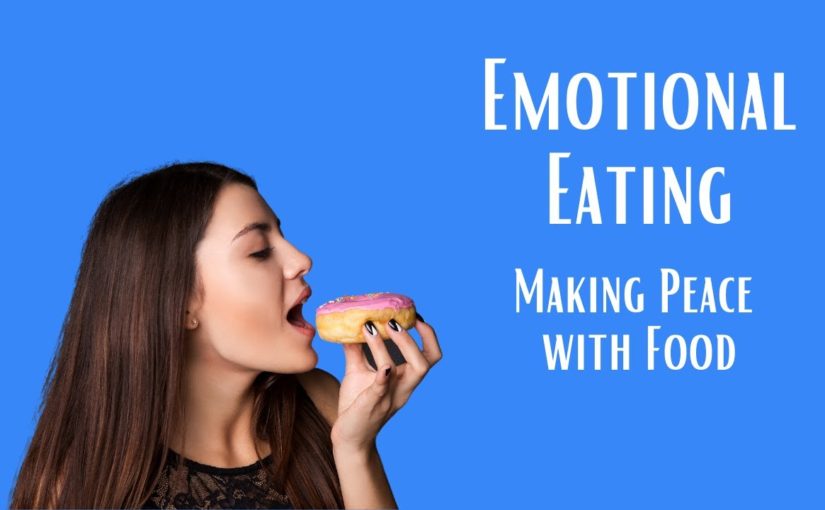


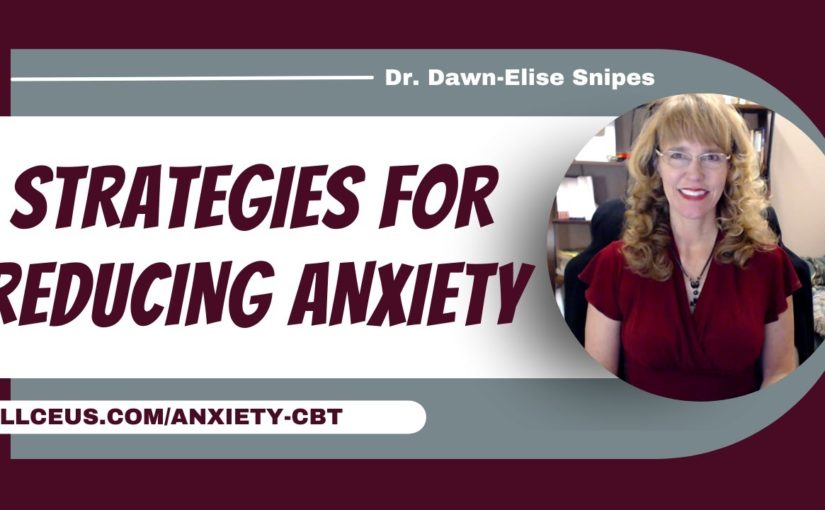
 Snipes by subscribing
at all CEUs comm slash counselor toolbox, this episode has been brought to you in part by all
CEUs calmly provide 24/7 multimedia continuing education and pre-certification training to
counselors therapists and nurses since 2006 have used coupon code consular toolbox to get
a 20% discount on your order this month.
Snipes by subscribing
at all CEUs comm slash counselor toolbox, this episode has been brought to you in part by all
CEUs calmly provide 24/7 multimedia continuing education and pre-certification training to
counselors therapists and nurses since 2006 have used coupon code consular toolbox to get
a 20% discount on your order this month.